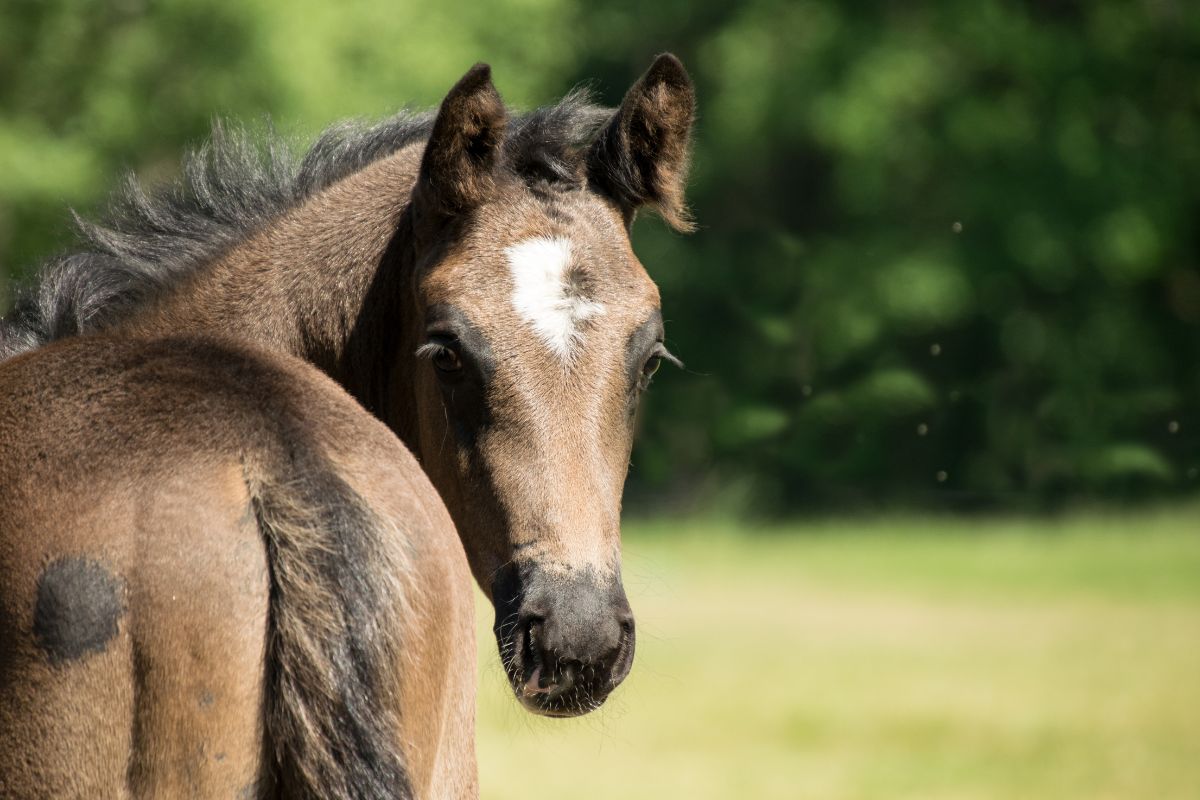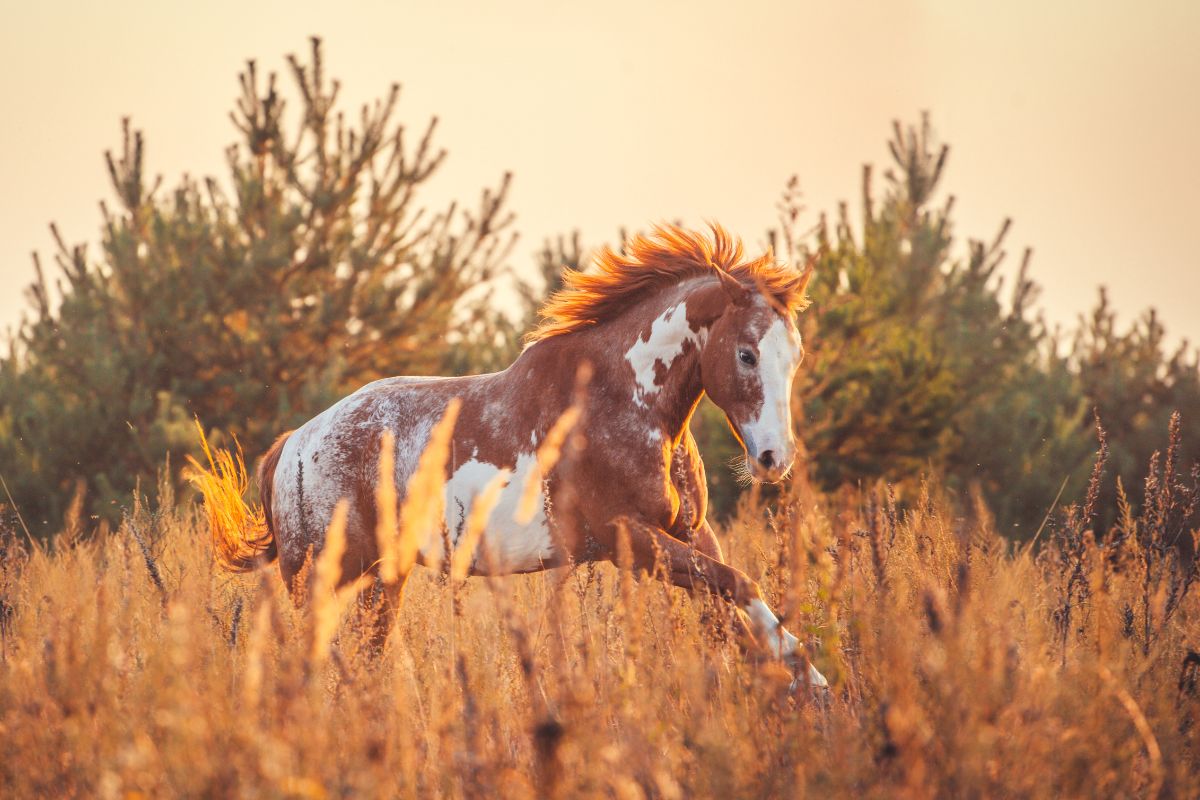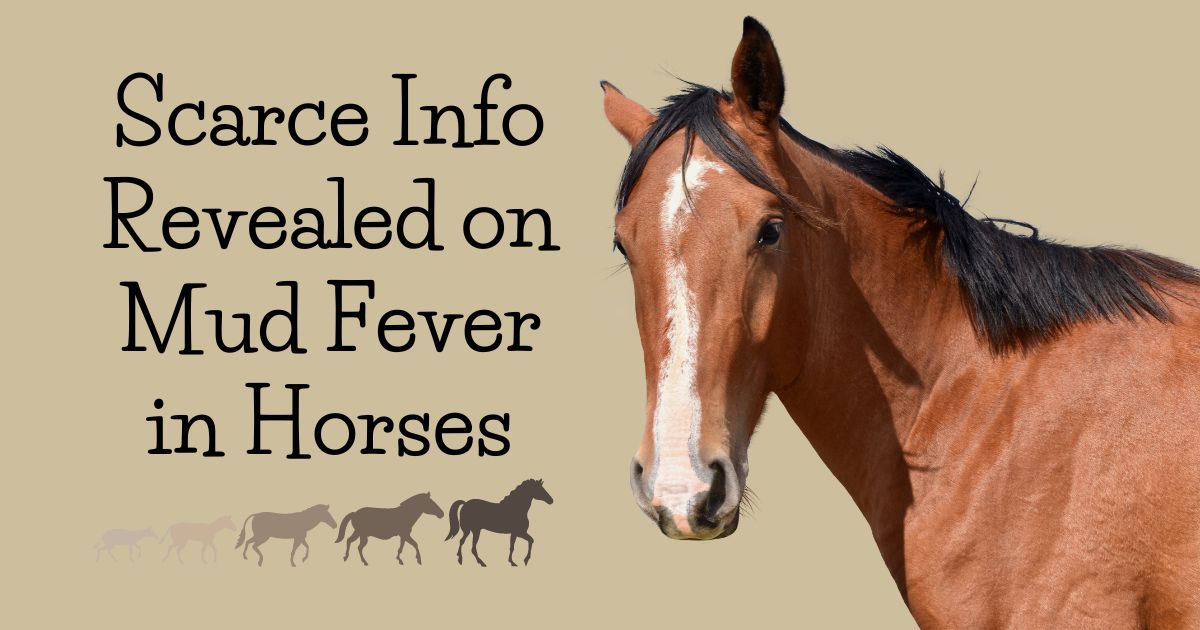What is Mud Fever?
Mud fever in horses is the term for a wide variety of skin diseases affecting horses. As the name suggests, muddy or wet conditions may play a role, but it isn’t always the case. In reality, mud fever or mud rash in horses is a type of dermatitis – a skin infection.
But what is mud fever in horses really? Keep reading to find out!

The Causes
Horse mud fever is also called pastern dermatitis. It is a common skin disease in horses, often particularly affecting the lower limbs. It can occur in the summer but is often more common during the wet months when horses stand in mud from time to time.
The horse’s skin is more likely to break when it is moist for extended periods. A breach of the skin barrier then allows bacteria from the surrounding environment to enter the multiple skin layers.
Commonly the bacteria associated with mud fever in horses is the one called Dermatophilis congolensis. However, we now know that many factors can contribute to the condition. Not one bacteria is likely to be solely responsible for all cases of mud fever.
As the bacteria enters the skin, it is likely to cause a painful flare of inflammation, which can cause significant discomfort for the horse. Other minor cuts or comorbidities may also worsen the condition or allow the bacteria to establish themselves more easily within the skin.
Mud fever is not contagious, so owners should not worry about it spreading from one horse to another or people. However, it can be a symptom of issues with management, which is why it is essential to check other horses that share a pastern if one is showing signs.
Some horses are more likely to suffer from mud fever; these include horses with white legs, as the pink skin is associated with the white markings. These areas are often more sensitive to injuries compared to dark skin. Some evidence also suggests that Thoroughbreds and Arabs are more likely to suffer from a damaged skin barrier.
How Vets Diagnose the Condition
A mud fever horse is often characteristic and easy to spot. In some cases, a horse may frequently experience bouts of mud fever and a diagnosis, if possible, just from talking to a veterinarian over the phone. This is especially possible for owners familiar with the condition and treatment plan.
However, the diagnosis must be correct, as other conditions may display similar symptoms. Suppose your horse hasn’t experienced mud fever or similar conditions before. A veterinarian will need to see it to make a definite diagnosis. To make a diagnosis, your veterinarian will examine the horse thoroughly and will likely ask you many questions.
The questions will vary depending on the location. However, generally, the veterinarian needs to know if other horses in the yard are displaying similar symptoms, if there have been mites recently and how general management is.
Your vet may perform some diagnostic tests to look for fungal or bacterial infections in the skin and take samples from some of the scabs on the skin. If indicated, skin scrapes may also be helpful to rule out mites that typically burrow through the skin.
What are the Signs and Symptoms of Mud Fever in Horses?
The most common symptom of mud fever in horses is the appearance of scabs on the horse’s legs, typically the hoof and fetlock. However, in some cases, the scabs may spread even higher. The skin is often also matted, and some discharge may even be present. Underneath the scabs, lesions are often present.
The first symptoms you spot may be heat and swelling in an area of the limbs. You may also notice that your horse reacts to pressure or flexion of the affected limb.
Suppose your horse isn’t typically one to suffer from mud fever. In that case, it is crucial to contact a veterinarian to ensure that it is genuinely mud fever you are dealing with, as other conditions display similar symptoms. For example, conditions like Leukocytoclastic vasculitis can look similar to mud fever.

How is Equine Mud Fever Treated?
The ideal treatment for mud fever in horses will vary depending on the cause, the area, and the severity. The first step in treating mud fever is to detect and treat any underlying conditions that may worsen the issue. Underlying conditions can include mite infections, allergies, and other infections.
The horse will also need to move from the muddy or wet areas to keep it from repeating the wet-to-dry cycle that damages the skin. If the areas within the stable are dirty or wet, this will need replacement with dry bedding.
Chlorhexidine scrubs have excellent antibacterial qualities and may help remove bacteria. Remember to always ask your veterinarian for advice on using antibacterial washes, as using too strong a solution can be painful and even hurt your horse.
Some veterinarians will also recommend removing the scabs from the afflicted areas as this may kill the bacteria. It is, however, only sometimes recommended and should be done carefully and only when it doesn’t hurt the horse.
In some severe cases, systemic or topical antibiotics may be helpful. Still, avoid them if possible to not enhance resistance issues experienced worldwide. If the inflammation is causing your horse suffering, a veterinarian may also recommend pain or anti-inflammatory medication.
If not treated, mud fever can lead to other complications, including cellulitis and lymphangitis. Both are bacterial infections of the leg which eventually affect the blood and lymphatic vessels, leading to swelling and discomfort.
Key Points for Successful Treatment
Treating mud fever and similar issues starts long before the conditions arise. One of the best things you can do for your horse is to teach it to accept treatment. Accepting being touched and treated by veterinarians and owners alike will make the whole experience much easier and safer for everyone involved.
If you know your horse dislikes having its hoofs or lower limbs touched, it may be well worth starting the training sessions now – before any issues arise. If you need help figuring out where to start, reach out to other horse owners, trainers, or your veterinarian for advice on where to get started.
Having a horse that allows treatment is essential, as mud fever treatment can be complicated and take a long time. But if you hang in there, the horse will hopefully recover in no time!
Standard recommendations for the treatment of mud fever in horses often include the following:
- Soaking afflicted limbs in warm water every three days.
- Use chlorhexidine scrub and remove scabs carefully.
- Rinse with warm water.
- Dry the limbs thoroughly afterward. If possible, use a new clean towel for each leg to avoid spreading the infection between the legs.
- Apply antibacterial creams daily and after every wash.
Properly washing and using topical antibacterial treatments are essential for ensuring a quick recovery from mud fever.
Lastly, it is also beneficial to keep an eye out for new scabs or issues that may arise during treatment and contact your veterinarian if any new issues arise. Especially if you notice swelling or signs of pain, as these are early signs of cellulitis or lymphangitis.
Can Mud Fever in Horses be Prevented?
Treating mud fever takes a lot of effort, and the condition can be very uncomfortable for your horse, which is why prevention is one of the most important things you can do as a horse owner.
Several risk factors are likely to increase the chances of skin damage in horses. Here are some of them and how you can prevent them:
Risk Factors
Standing in Muddy, Moist, or Wet Conditions for Long Periods
Most horses are happy to be outside, even in the rain. But, if the pastern becomes muddy or wet, moving your horse to drier areas from time to time is essential to avoid moisture softening the skin and causing skin breakage.
Dirty Beddings
Dirty beddings are also sometimes moist and can lead to the same issues as a muddy pastern. Therefore, cleaning the beddings within the stables is essential to ensure they aren’t moist.
Wounds and Cuts
Suppose a horse experiences a cut or small wound due to other injuries. In that case, it may lead to inflammation of that area due to bacteria infiltrating the cut. If a horse displays minor cuts, it should be regularly cleaned or seen by a veterinarian to prevent any possible infections.
Weakened Immune System
A weak immune system will make the horse susceptible to other diseases, including mud fever. Other diseases, like Cushing’s, can be the reason for the lowered immune system.
Prevention Measures
Washing of the Limbs
Although it is often beneficial and sometimes necessary to clean your horse, it is essential to remember to dry it off properly. Owners should remember to wipe and dry as much excess water as possible to keep the skin from softening. This is especially important during the colder months when the sun is unlikely to dry the skin.
It can be challenging to prevent secondary infections in these horses. The best thing owners can do is to keep up with the proper medication and regular vet checkups to ensure the horse stays as healthy as possible.
Another thing you can do to help prevent mud fever in horses is using overreach boots to minimize the risk of pastern injury where possible. Ensure your use boots fit correctly to ensure the boots aren’t rubbing and causing issues. In some horses, barrier creams may also prevent damage to the skin.
Lastly, the number one thing owners can do to prevent mud fever in horses is to frequently check them for scabs and injuries. If you or someone else do find something, contact your veterinary care provider as soon as possible to ensure starting treatment as quickly as possible.
FAQ
What are other names for mud fever in horses?
The correct name for mud fever is pastern dermatitis. Other common names include greasy heels, cracked heels, and even horse fungus.
Can mud fever spread from horses to humans?
No, mud fever is not contagious. It will, therefore, not be able to affect other horses, nor will it be able to spread to humans.
What mites can worsen mud fever?
Leg mites, also called Chorioptic mange, can damage and thicken the skin, predisposing the skin to bacterial infection. Mites are also likely to cause excessive itching and irritation, which may even lead your horse to damage the skin itself when they attempt to itch the area. Treating the mites is vital for ensuring recovery from mud fever.
Should we treat all horses in a yard for mud fever?
Although mud fever isn’t contagious, it may be worth checking on all other horses in the yard. If one suffers from mud fever, others are likely experiencing similar issues with soft and breakable skin or already have a damaged skin barrier.
What about horses with long fur?
If your horse has long and thick fur, it may be necessary to clip it. Clipping exposes the skin to the air and makes it easier to clean and treat.
Is mud fever likely to come back?
Suppose your horse does not suffer from an immune-compromising disease. In that case, it is not a significantly higher risk of developing mud fever once the condition is clear. However, if kept in the same conditions without preventive measures, it will likely suffer from mud fever again.
Check out our recommendations for preventing the condition to try and minimize the risk of your horse suffering from mud fever again in the future.

Final Recommendations
Mud fever is an annoying and troublesome companion in areas where the pasterns are likely to become muddy or wet. No matter how excellent the management is, it can occur in horses worldwide, and owners should not beat themselves up.
Instead, give your veterinarian a call and ask for advice on how to proceed. Together you should be able to work out a treatment plan that is ideal for your and your hoofed friend to ensure you can both enjoy the outdoors together again in no time!
